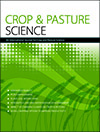Stakeholders have challenged the relevance of critical soil-test phosphorus (P) values for pastures determined from the Better Fertiliser Decisions for Pastures (BFDP) meta-analysis to soils and contemporary pasture species in south-western Australia. We present results from 50 rate-response trials using contemporary pasture species compared with BFDP critical soil-test P values. The work should increase confidence in and use of critical soil-test P values in support of evidence-based P fertiliser advice, to minimise off-site impacts of P to waterways and plan fertiliser applications.
CP23194 Abstract | CP23194 Full Text | CP23194PDF (3.3 MB) | CP23194Supplementary Material (795 KB) Open Access Article





